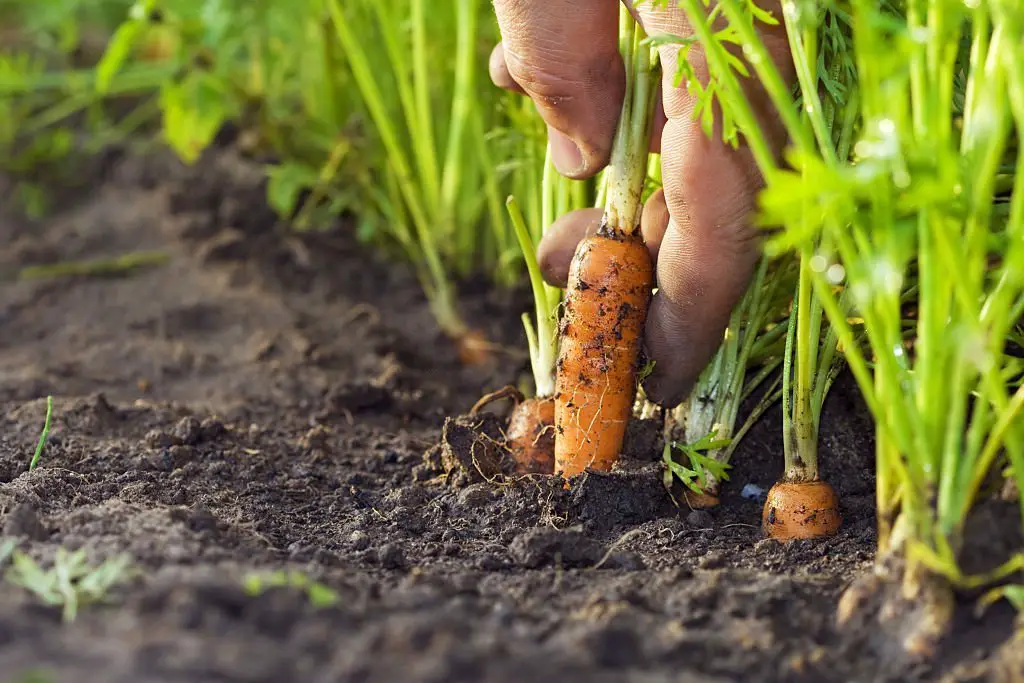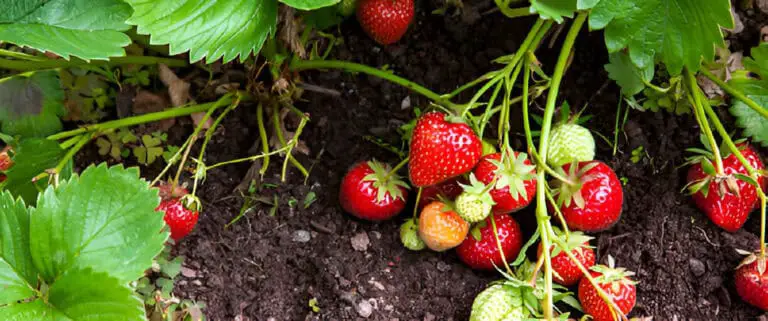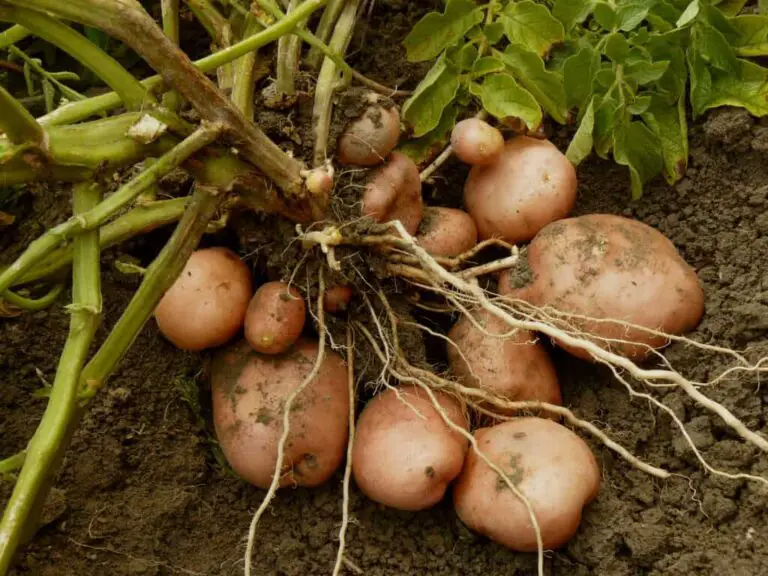Where Do Carrots Grow Naturally? Do Carrots Grow in the Wild?

Carrots are a staple in many kitchens and a favorite of both children and adults alike. But have you ever thought about where these bright orange root vegetables come from?
While most of us associate carrots with neat and tidy rows of crops in a farmer’s field, the truth is that carrots have a rich and diverse history, including a wild ancestor that grows in natural habitats all over the world.
In this blog post, we’ll learn more about wild carrots, including where they grow naturally and what makes them different from carrots grown in a garden.
So grab a carrot and let’s get started!
History and Origin of Carrots
Carrots have been around for thousands of years. They were first grown in ancient Persia and Afghanistan. People think that the wild ancestor of the modern carrot came from central Asia, around the Caspian and Aral seas.
In the 16th century, Dutch farmers developed the first orange carrot variety, which they called, not surprisingly, the “Dutch carrot.” This new variety quickly became popular and soon spread throughout Europe and eventually to other parts of the world.
It is believed that the original wild carrots were purple or yellow in color and much smaller than the orange carrots that are commonly grown today. Over time, the cultivation and selective breeding of these root vegetables led to the development of the sweet and crunchy orange carrots we know today.
Today, carrots are one of the most widely grown and eaten root vegetables in the world. China is the biggest producer, followed by the US, Russia, and Ukraine.
Do Carrots Grow in the Wild?
Daucus carota is the scientific name for the wild ancestor of the modern carrot. It is from Europe, Asia, and Africa. It grows all over the United States except in the Great Basin and the deserts of the Southwest.
They are typically found in meadows, pastures, roadsides, waste places, and open areas with sandy or gravelly soils and wet areas. Wild carrot can also be found on grassland, cliffs, roadsides, and in hedge banks.
It only grows from seeds, which are spread by the wind and animals. Wild carrots are important to many animals, like rabbits, deer, and birds, because they provide food and shelter.
Wild carrots have a long and diverse history, serving as both a food source and medicinal plant. They have been used for hundreds of years to treat a wide range of illnesses, such as digestive problems, breathing problems, and skin problems. Carotenoids and volatile oils, which are found in the roots and leaves of the wild carrot plant, are thought to be the reason why it can be used as medicine.
Despite its long history of use, the wild carrot is often considered a weed and is sometimes treated as such. It can spread quickly and take over disturbed areas, competing with native plants for light, water, and nutrients. In some places, it can be invasive. In many cases, wild carrots can be controlled through physical removal or by using selective herbicides.
In recent years, people have become more interested in growing wild carrots because they can be used in cooking and as medicine. Some cultivars have been made for their taste, color, and nutritional value, which makes them a good choice for small-scale farmers and people who grow their own food at home.
Also, people are becoming more interested in wild carrots as a natural alternative to cultivated carrots because there is a growing demand for natural and organic products.
There are a number of subspecies of wild carrots, and each has its own unique traits and ways to grow naturally. Some of the most commonly found wild carrot species include Queen Anne’s Lace, Horned Carrot, and Bisnaga. These species are different in how they look, how big they are, and how they taste, but they are all the wild ancestors of the modern cultivated carrot.
Natural Growing Conditions for Wild Carrots
Wild carrots typically grow in open meadows, along roadsides, and in other disturbed areas. They prefer well-drained soils and require full sun to grow naturally and mature. Wild carrots can also grow in a variety of climates, from the temperate regions of Europe to the semi-arid regions of Africa.
In their natural habitat, wild carrots face fewer pest and disease pressures compared to cultivated carrots, which are often grown in monocultures and under controlled conditions. Understanding where wild carrots grow and how they grow gives us important information about how carrots have changed over time and how well they can adapt to different environments.
Cultivated Carrots
History of Cultivated Carrots
Carrots have been grown as a crop since ancient times. There is evidence that carrots were grown in the Middle East and Europe in the 10th and 11th centuries. During this time, orange carrots were first grown in the Middle East and then spread to Europe.
Over time, carrots became a staple crop in many parts of the world, prized for their sweet and crunchy taste as well as their nutritional value. Today, carrots are grown in many regions around the world, with the largest producers being China, Russia, and the United States.
Characteristics of Cultivated Carrots
Cultivated carrots are characterized by their long, tapered roots that can be either orange, purple, yellow, red, or white in color. The size and shape of the roots can vary greatly depending on the variety, and the flavor can range from sweet to slightly bitter. Carrots grown in a garden are also known for having a lot of vitamins, minerals, and antioxidants.
Growing Conditions for Cultivated Carrots
Cultivated carrots are grown in a variety of soils and climates, but they prefer well-drained soil that is rich in organic matter. They also require full sun to grow and mature.
Carrots are often grown in controlled environments, like greenhouses or large commercial farms, so that the yields are high and the quality is always the same. This way of growing carrots lets farmers carefully control the soil’s fertility, the amount of water it gets, and how many pests and diseases are in the area. But it also increases the risk of monoculture, which leads to a lack of genetic diversity and makes the crop more vulnerable to pests and diseases.
Differences Between Wild and Cultivated Carrots
The wild carrot, which is also called Daucus carota, is the ancestor of the carrots that are grown and eaten today. While both types of carrots belong to the same species, there are significant differences between the wild and cultivated varieties.
These differences can be seen in how they look, how they taste, and what they can be used for in the kitchen.
1. Physical Differences
The way wild and cultivated carrots look is one of the most obvious ways in which they are different. Wild carrots look more delicate and lacy because their leaves are cut into small pieces and their flowers are white or light purple.
On the other hand, carrots that are grown in a garden look more uniform and tight, with thicker leaves and bigger, brighter-colored flowers. The root of the wild carrot is also smaller, more irregularly shaped, and often has a stronger flavor than the root of the cultivated carrot.
2. Nutritional Differences
Another difference between the two types of carrots is their nutritional content. Wild carrots tend to be higher in certain nutrients, such as vitamins and minerals, compared to cultivated carrots. This is likely because wild carrots grow in their natural environment and aren’t as affected by pests and diseases.
This lets them build up a stronger nutritional profile. But carrots that are grown in a field are usually bigger and more uniform in size, which makes them easier to cook and eat.
3. Culinary Uses
Wild carrots can be used in a variety of culinary applications, but they are often used in salads and as a garnish. They have a stronger, more earthy flavor compared to cultivated carrots, which are more commonly used in cooking.
Wild carrot varieties also tend to be woodier and less sweet than domesticated varieties due to their natural adaptation process over time. While these plants are related to cultivated carrots, they do not provide the same nutritional content as modern-day commercial carrots do.
Cultivated carrots are often used in soups, stews, and roasts, as well as in raw form as a snack or a side dish.
Conclusion
Carrots are popular because they taste sweet and crunchy and because they are good for you in many ways. Carrots are full of vitamins, minerals, and fiber, and they have been linked to many health benefits, such as better eye health, heart health, and digestive health. Carrots are also easy to use in cooking and baking, and you can eat them raw, cooked, or in juice.
While most of the carrots grown today are cultivated and farmed, wild carrots can still be found growing in the wild in many parts of the world, including meadows, pastures, roadsides, and waste places.
Wild carrots are an important source of food and shelter for wildlife, and they have been used for centuries for their medicinal properties. Even though they are considered weeds in some places, wild carrots have become more popular in recent years, in part because they are natural and organic.
Whether grown in the wild or on a farm, carrots remain a popular and nutritious food choice, enjoyed for their sweet and crunchy taste, as well as their numerous health benefits.






